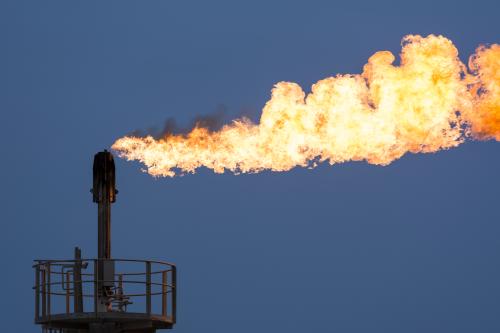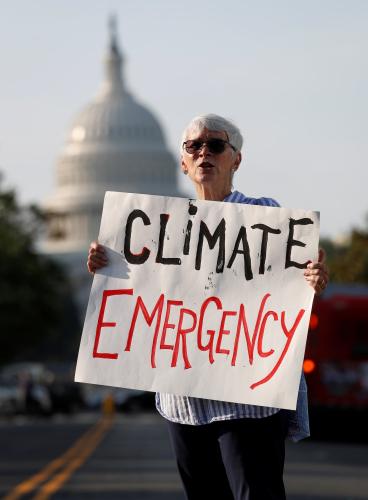Content from the Brookings-Tsinghua Public Policy Center is now archived. Since October 1, 2020, Brookings has maintained a limited partnership with Tsinghua University School of Public Policy and Management that is intended to facilitate jointly organized dialogues, meetings, and/or events.
Now we have a landmark agreement on climate change, the real work must begin.
The recent Paris climate change conference was a landmark success in global governance.
The final accord has won widespread acclaim from the world’s media and politicians. After a series of high-stakes and high-profile negotiations, the resultant Paris agreement has armed the international community’s commitment to limiting global temperature rise well below 2oC above pre-industrial levels.
Achieved amid a procession of international crises and tragedies — perhaps most notably the terrorist attacks in Paris — this agreement is justly celebrated as an occasion for renewed optimism, a genuine diplomatic achievement. The challenge now is to translate this moral victory into practical successes.
To translate the optimism into green and low-carbon development requires a lot of hard work — harder perhaps than many may realize. Each country arrived at the conference with its own pledges, the so-called intended national determined contributions. These national targets and strategies for reducing greenhouse gas emissions set the very foundation for the success of the Paris agreement. Now it is up to each country to deliver these goals.
Consider the world’s top two emitters, the United States and China. In the two years leading up to the Paris conference, progress made by the two countries on climate change has been real and unprecedented. Indeed, the agreements by the administrations of President Xi Jin-ping and President Barack Obama on this front generated major momentum for the Paris conference.
But looking forward, the road appears somewhat bumpy. Apart from the resistance of the US Congress, nearly half of the 50 states have made it clear that they will challenge Obama’s Clean Power Plan in court. This plan is considered the cornerstone of the US’ emissions pledges.
By the end of last year, US energy- related carbon emissions had declined by less than 10 percent in the nine years since 2005, or about one percent per year on average. Using this as a proxy for overall greenhouse gas emissions trends, in the coming decade the rate of decarbonization in the economy will have to almost double in order to meet the US target in the Paris agreement.
Additionally, the joint presidential agreement signed by Xi and Obama to provide $3 billion (2.74 billion euros), or 3 percent of the $100 billion commitment made by developed countries, to the Green Climate Fund will have to be approved by Congress, where it has already been opposed by some key members. Thus, despite landing the Paris agreement, Obama will have to work even harder in his remaining year in office to secure a lasting legacy on climate change.
China faces its own daunting challenges in transitioning to a low-carbon economy. China is expected to specifically outline how it will implement its INDCs in its 13th Five-Year Plan (2016-20). But reaching peak carbon emissions will require a lower rate of GDP growth, decreasing by roughly one-third over 15 years. Considering the current struggle to maintain economic growth in the new normal, both the economy and society will have to undergo tough transitions.
And herein lies catch-22. Under China’s INDCs, 20 percent of energy consumption will have to come from nonfossil fuels, which means 800 to 1,000 gigawatts of power generation capacity will need to be added over the next 15 years. This is equivalent to China installing the present-day US generation capacity, but based solely on nonfossil energy.
The required multitrillion-dollar investment would depend on rapid economic growth. In addition to the climate goals, the Chinese government is still working hard to eradicate poverty in the country, aiming to lift 70 million people out of poverty. Thus, a moderately high rate of economic growth is necessary, but this may be in conflict with the target for peak carbon emissions.
As a diplomatic agreement, the Paris agreement is commendable and historic. But now the task is to canalize this diplomatic goodwill and national ambition into practical achievements. Will the world be able to limit warming well below 2oC above pre-industrial levels? This will be a difficult — some experts say outright impossible — task.
In the two years leading up to Paris, a popular term in the climate discourse was “post-Paris”. Now we are finally in post-Paris, and the real challenge has begun.
This piece was originally published on China Daily European Weekly, December 18-24



Commentary
Post-Paris: Time to get back to reality
December 18, 2015